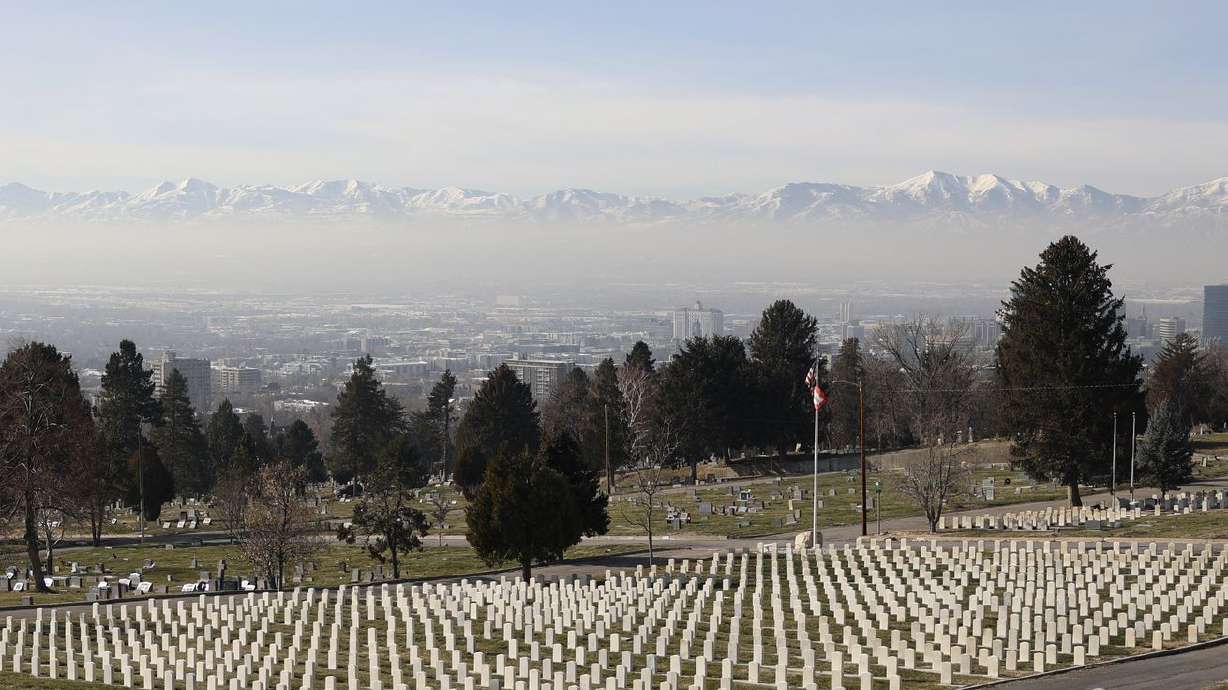Estimated read time: 3-4 minutes
This archived news story is available only for your personal, non-commercial use. Information in the story may be outdated or superseded by additional information. Reading or replaying the story in its archived form does not constitute a republication of the story.
SALT LAKE CITY — Poor air quality along the Wasatch Front has been found to decrease life expectancy by two years on average, yet Utah doesn't collect data about the human toll of dirty air.
That could change, though, under proposed legislation by Rep. Stephen Handy, R-Layton. If passed, HB109 would allow a medical examiner to include air pollution on a certificate of death if he or she "reasonably believes air pollution factored into the cause of death."
Handy said the data collected from death certificates could help lawmakers enact more effective policies in the future.
How many people die of air pollution?
HB109 was inspired by a 2020 study by researchers from Brigham Young University, the University of Utah and Utah State University. According to that report, air pollution is the cause of between 2,500 and 8,000 premature deaths in Utah each year.
One hurdle the researchers discussed to improving air quality is a "lack of trust in and relevance of currently available estimates of air pollution costs."
"(If) we get out there five, six, seven or eight years from now, we will have some data points that we can really use as policymakers," Handy said.
That same study included research that 9.2 million people globally die because of outdoor air pollution. In 2020, a court in London ruled that air pollution "made a material contribution" in the death of a 9-year-old girl in 2013. Handy cited this case as another example of what he hopes to accomplish with the bill.

How bad is Utah's air?
The Environmental Protection Agency sets federal standards for clean air. The federal limit for fine particulate matter, or PM2.5, is 35 micrograms per cubic meter. Last month, the Deseret News reported that inversion caused PM2.5 numbers as high as the 50s, which the Utah Department of Environmental Quality considers to be "unhealthy for sensitive groups."
Extended exposure to air pollution leads to increased risk of health issues, said Meisei Gonzalez, spokesperson for the Healthy Environment Alliance of Utah. He said pollution causes both short- and long-term health issues, including asthma, decreased lung function, heart attacks and decreased ability to fight disease.
"These longer-term health issues are the ones that are extremely dangerous ... (because) they can also lead to death," Gonzalez said.
Some Utahns face higher risks than others, Gonzalez said, as preexisting conditions such as cancer, diabetes and even long-term COVID-19 make one more susceptible to air pollution.
"To expand on that is an environmental justice element," Gonzalez said. "This air pollution isn't being felt by all communities in the same way. Historically low-income and predominantly Black, Latino, Asian and Pacific Islander, and Indigenous communities are being exposed to air pollution at higher levels."
These inequities are caused by a range of factors, including living or work requirements that tend to impact certain communities. Proximity to highways, amount of green space and elevation can all impact the concentration of pollutants in various locations across the Wasatch Front.
Related:
Minority communities also face barriers to accessing health care, Gonzalez said, which leads to worse results of air pollution.
"So not only are they exposed more, but they're constantly fighting other systemic flaws," he said.
How to protect yourself from pollution
Although air quality has improved in Utah over the past 20 years, Gonzalez said the "real-time data" collected will help regular Utahns understand the risks of pollution. For those at higher risk, he recommended limiting outdoor exposure and wearing N95 masks when pollution levels are high.
In the long term, expanding public transportation, investing in electric vehicles and encouraging remote work are steps Gonzalez said the government and industry can take to mitigate pollution. Some state employees already participate in a Surge Telework program, which is activated when air quality is particularly poor.









